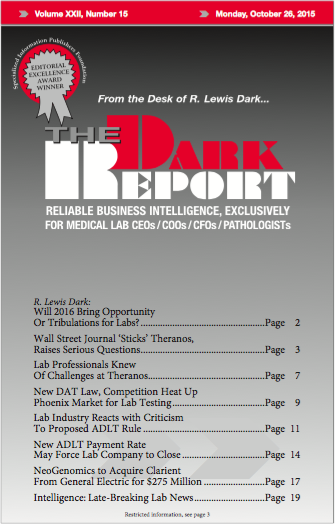CEO SUMMARY: Some in the lab industry had high hopes that passage of the Protecting Access to Medicare Act (PAMA) last year would favorably resolve a number of important issues. However, those hopes were dashed following the September 25 release by CMS of a proposed rule setting out how it will collect market test prices …
Labs React with Criticism to Proposed ADLT Rule Read More »
To access this post, you must purchase The Dark Report.


